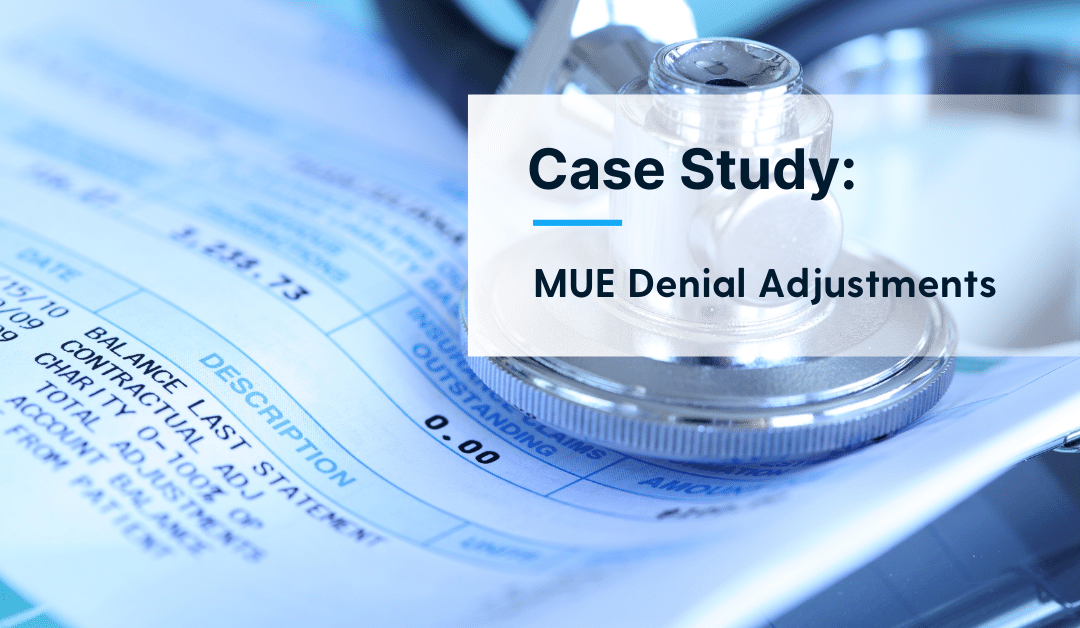By: Billie Mildenberger, Director of Audit Services, Lighthouse Lab Services
RCM Case Study – MUE Denial Adjustments:
Medically Unlikely Edits (MUEs) are used by Medicare Administrative Contractors (MACs), to reduce the improper payment rate for Part B claims. An MUE for HCPCS/CPT code is the maximum units of service that a provider would report under most circumstances for a single beneficiary on a single date of service. However, not all HCPCS/CPT codes have an MUE.
The CMS MUE table includes a column for MUE Adjudication Indicator (MAI), which provides guidance about what circumstances allow you to override an MUE limit for a give code:
MAI 1: Line Edit
- MUE MAI “1” indicates a claim line edit. When it is appropriate to report units that exceed the MUE, use one or more additional claim lines with an appropriate modifier appended to the code. Payors who apply the MUE will process each claim line separately for payment.
MAI 2: Date of Service Edit: Policy
- MUE MAI “2” indicates an absolute date of service (DOS) edit based on policy. Payers who apply the MUE sum the code’s same-DOS units (not counting lines with modifier 55). If the sum exceeds the MUE value, the payor will deny same-DOS lines with that code on the current claim. CMS has not identified any instances in which exceeding an MAI 2 MUE is correct.
MAI 3: Date of Service Edit: Clinical
- MUE MAI “3” indicate a date of service (DOS) edit based on clinical benchmarks. Payors who apply the MUE sum the code’s same-DOS units (not counting lines with modifier 55). If the sum exceeds the MUE value, the payer will deny same-DOS lines with that code on the current claim. MACs may pay excess units upon appeal or may bypass the MUE based on documentation of medical necessity.
Issue identified:
When a payor denies services that exceed the MUE limit, the report should be reviewed by the coding department to confirm the physician performed and documented a medically necessary number of services. Once it has been determined that the documentation supports the services billed an appeal should be sent with supporting documentation.
Lighthouse RCM Consulting identified through an audit that although the appropriate coding and units had been submitted, a number of denials for MUEs were being adjusted off instead of appealed properly with the appropriate modifier/documentation.
Examples:
88342 has an MUE of four units.
- The physician performed and documented 5 units of 88342.
The biller split the units on the claim incorrectly to reflect 88342×3, 88342×2. This caused the claim to be denied twice before the balance of $600 was adjusted off the system. – Loss of $600
- The physician performed and documented 5 units of 88342.
The biller split the units on the claim correctly to reflect 88342×4-, 88341×1, but incorrect modifiers were applied causing the claim to deny twice before the balance of $600 was adjusted off the system. – Loss of $600
Resolution:
The biller discovered one employee was responsible for taking the adjustments and is auditing all the employees’ adjustments internally.
The biller also created a new standard operating procedure (SOP) for MUE denials.
Why do we audit?
Lighthouse RCM Consulting completes a quarterly audit for all of our full-scope clients to ensure that processes are tight, well defined, and effectively communicated.
Our audit process includes a thorough analysis of the revenue cycle, from charge capture to 100% adjudication (either payment, adjustment, or write off) – determining if the process to 100% adjudication is not only done correctly from an accounting standpoint, but compliantly.
Having issues with MUEs or other denial adjustments? Reach out to us to schedule a free consultation!
